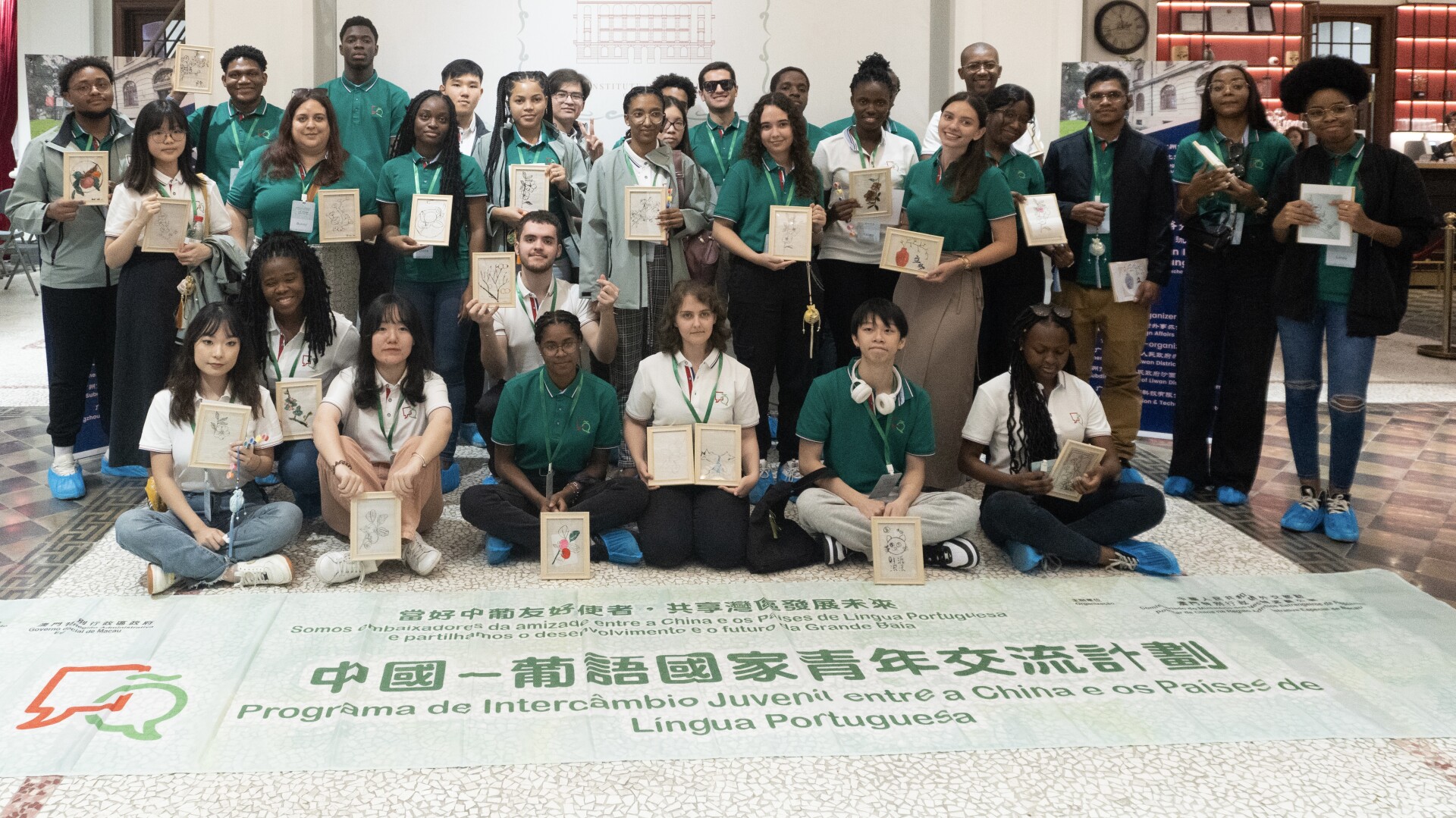On November 2nd, A Walk in Shamian Island to Experience Guangzhou (Portuguese-speaking Countries Youth Exchange Programme)was held in Shamian Island of Liwan District, Guangzhou. Over 30 students from Portuguese-speaking countries studying in the Macao Special Administrative Region and Macao students learning Portuguese joined this event.

Walking on the historic Island with the century-old exotic architecture, they visited the Guangdong Foreign Affairs Museum and immersed themselves in traditional Lingnan culture by experiencing traditional Chinese incense, DIY sachet, and pith painting.

Feeling the fragrance of incense.
“This is the first time for me to come to Guangzhou. Through the tour, I have understood the important role of Macao and Guangzhou as coastal port cities in commercial activities. This event not only gives me the opportunity to learn more about Guangzhou from a political and cultural perspective but also allows me to visit different museums and experience Chinese traditional incense-making and pith painting,”said Daniel Putra de Jesus, a sophomore from East Timor and now majoring in Economics at the University of Macau.

Daniel and the pith painting he drew.
Daniel furthered that he also learned calligraphy, mooncake making in the Mid-Autumn Festival, and other Chinese traditional culture in Macao.“There have been many Chinese communities in my country since a long time ago. Before I often saw them celebrating festivals, displaying traditional clothing, and performing dragon dances on the street, but I didn’t know what that meant. It’s only when I pursued my study in Macao that I understood the inner meaning of these festivals and why the Chinese value them so much.”
Boasting geological strength in the Guangdong-Hong Kong-Macao Greater Bay Area, Macao serves as a gateway for exchanges and cooperation between China and many Portuguese-speaking countries.
Macao-born and raised, Marco, an undergraduate at the Macao Institute for Tourism Studies (IFTM), speaks fluent Mandarin, Cantonese, Portuguese, and English, and both of his parents are mixed Chinese-Portuguese. “I came to Guangzhou for the first time when I was a child. This is the second time to visit Guangzhou and I’m amazed by the food here!”
This activity is organized by the Guangzhou Foreign Affairs Office and co-organized by the General Office of the Liwan District Government and the Shamian Sub-district Office of the Liwan District Government.
About Incense
Incense refers to the use of natural aromatic herbs and plant-based binders as raw materials. The origin of incense in China can be traced back to the Spring Autumn and Warring States period. Through watching, touching, sniffing and other forms to appreciate those precious spices wholeheartedly, people constantly pursue the mood of tranquility, elegance, beauty, truth, and harmony, with pure natural aroma as the raw material.

About Sachet
Sachet is a folk embroidered craft created by ancient women, the history of wearing sachets can be traced back to the Shang and Zhou dynasties. Sachets have long been an object that carries a range of uses in various contexts due to aromatic fragrance and intricate embroidery.


About Pith Painting
The material used for pith painting is rice paper pith, which is crunchy and easy to crack, so the pith paintings are difficult to keep large-sized. Pith paintings display a strong sense of depth the characters they portray are lifelike and the scenery is vivid.

Photos provided to GDToday
Reporter: Rofel, Zhou Yuting (Intern), Jiang Hongyi (Intern)
Editor: Wing, Steven, Jasmine, Jerry


